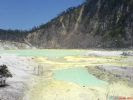Cooking with Fresh Herbs: Add Savory Flair to Your Favorite Recipes with These Simple Tricks
by: Jamie Jefferson
Fresh herbs add such savory flair to recipes, but if you don't know the basic rules for cooking with them, it can seem overwhelming. Here's what you need to know to start using herbs to liven up your favorite recipes.
Using Fresh Herbs
First, fresh herbs can be used in your baking, cooking and salads. They pack a lot more flavor than dried herbs. You can even grow the herbs yourself so that they are organic. You'll also save a lot of money because store-bought fresh herbs can get rather expensive.
When you use fresh herbs in a recipe, you need to make sure to use more than you would for dried herbs. Generally speaking, one teaspoon of dried herbs equals one tablespoon of fresh herbs. With this conversion measurement, you can use fresh herbs in any of the recipes that you currently make. You'll notice the difference in flavor right away.
If you're creating your own recipes you should know that some herbs are traditionally paired with certain dishes. For example, tuna tastes wonderful with thyme, rosemary, salt and pepper. Dill is also a good herb to be paired with fish. Chicken is traditionally paired with rosemary, thyme and basil. Sage is another good herb to use with chicken dishes. Beef does well with allspice, basil, bay, marjoram, oregano and thyme.
Storing Fresh Herbs
When you grow your own herbs or buy them from the store, you'll always end up with more than you need for a recipe. In order not to waste your investment in time and/or money, you'll need to store them properly.
Start out by washing the herbs in cool water. Carefully inspect the bunches of herbs to be sure that there aren't any dead leaves or stems. If you've been storing the herbs in your refrigerator or they are store bought, make sure to inspect the bunch well for mold. Once you're confident that dead leaves and mold are gone, you are ready to prepare them for storage.
Pat the herbs dry with a clean towel and then place the herbs in a short container filled with water. Be sure that the stems are covered in water but keep the leaves out of the water. After placing the stems in water, cover the top of the herbs with plastic wrap or a small plastic bag.
Alternatively, you can dry your own herbs, which will make them healthier and longer lasting than regular dried herbs. Pick the herbs and then use sisal twine to tie the bunch of herbs together. Make sure that your slipknots are tight because the herbs will shrink as they dry. Hang them and let them dry completely. Check frequently to see if the herbs are dry by rubbing a few leaves together. Store them in an airtight container after drying.
With these herb tips, you can use fresh herbs in your recipes for maximum flavor or make your own dried herbs that are better than store bought.
Fresh herbs add such savory flair to recipes, but if you don't know the basic rules for cooking with them, it can seem overwhelming. Here's what you need to know to start using herbs to liven up your favorite recipes.
Using Fresh Herbs
First, fresh herbs can be used in your baking, cooking and salads. They pack a lot more flavor than dried herbs. You can even grow the herbs yourself so that they are organic. You'll also save a lot of money because store-bought fresh herbs can get rather expensive.
When you use fresh herbs in a recipe, you need to make sure to use more than you would for dried herbs. Generally speaking, one teaspoon of dried herbs equals one tablespoon of fresh herbs. With this conversion measurement, you can use fresh herbs in any of the recipes that you currently make. You'll notice the difference in flavor right away.
If you're creating your own recipes you should know that some herbs are traditionally paired with certain dishes. For example, tuna tastes wonderful with thyme, rosemary, salt and pepper. Dill is also a good herb to be paired with fish. Chicken is traditionally paired with rosemary, thyme and basil. Sage is another good herb to use with chicken dishes. Beef does well with allspice, basil, bay, marjoram, oregano and thyme.
Storing Fresh Herbs
When you grow your own herbs or buy them from the store, you'll always end up with more than you need for a recipe. In order not to waste your investment in time and/or money, you'll need to store them properly.
Start out by washing the herbs in cool water. Carefully inspect the bunches of herbs to be sure that there aren't any dead leaves or stems. If you've been storing the herbs in your refrigerator or they are store bought, make sure to inspect the bunch well for mold. Once you're confident that dead leaves and mold are gone, you are ready to prepare them for storage.
Pat the herbs dry with a clean towel and then place the herbs in a short container filled with water. Be sure that the stems are covered in water but keep the leaves out of the water. After placing the stems in water, cover the top of the herbs with plastic wrap or a small plastic bag.
Alternatively, you can dry your own herbs, which will make them healthier and longer lasting than regular dried herbs. Pick the herbs and then use sisal twine to tie the bunch of herbs together. Make sure that your slipknots are tight because the herbs will shrink as they dry. Hang them and let them dry completely. Check frequently to see if the herbs are dry by rubbing a few leaves together. Store them in an airtight container after drying.
With these herb tips, you can use fresh herbs in your recipes for maximum flavor or make your own dried herbs that are better than store bought.


Comments
Post a Comment